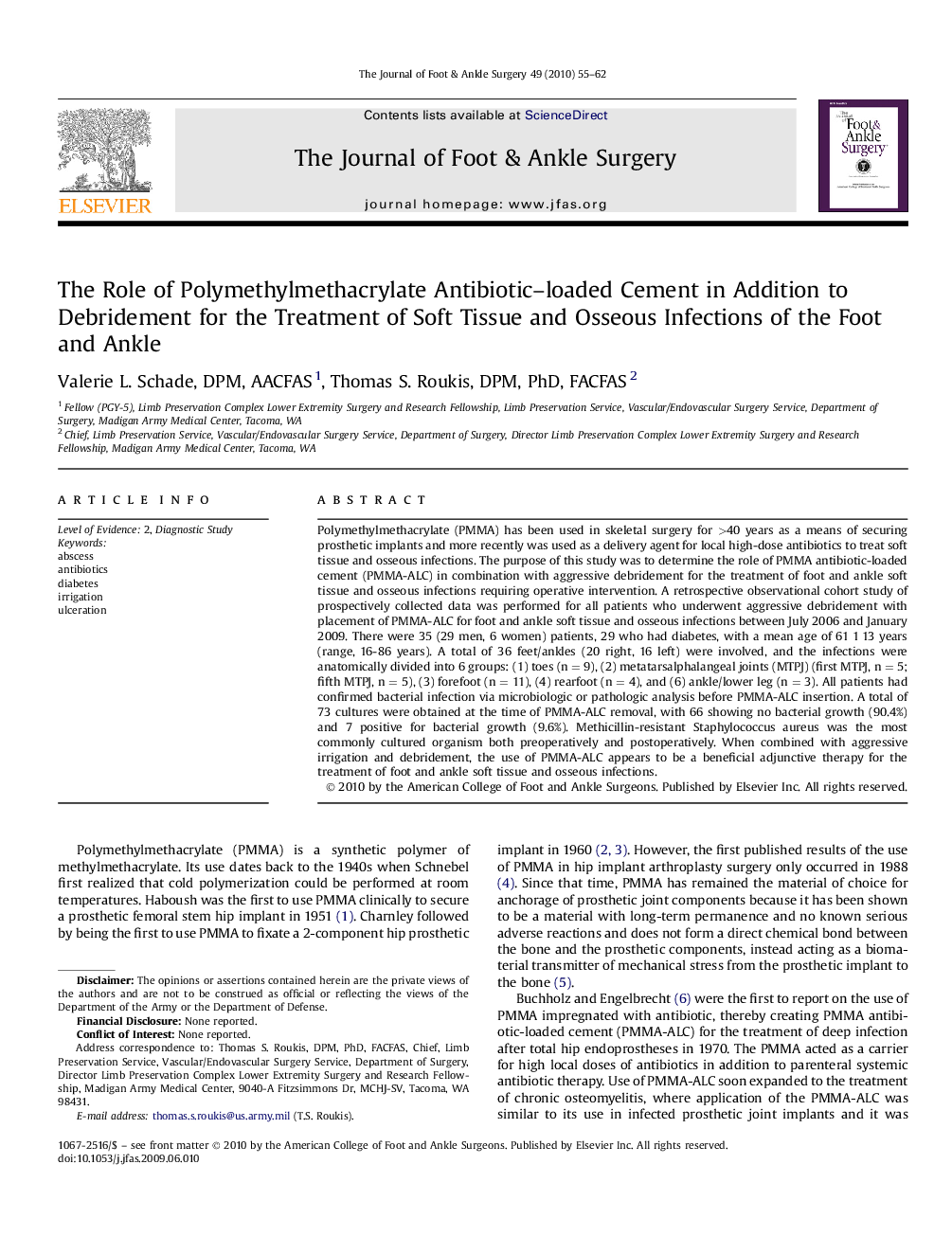| Article ID | Journal | Published Year | Pages | File Type |
|---|---|---|---|---|
| 2716136 | The Journal of Foot and Ankle Surgery | 2010 | 8 Pages |
Polymethylmethacrylate (PMMA) has been used in skeletal surgery for >40 years as a means of securing prosthetic implants and more recently was used as a delivery agent for local high-dose antibiotics to treat soft tissue and osseous infections. The purpose of this study was to determine the role of PMMA antibiotic-loaded cement (PMMA-ALC) in combination with aggressive debridement for the treatment of foot and ankle soft tissue and osseous infections requiring operative intervention. A retrospective observational cohort study of prospectively collected data was performed for all patients who underwent aggressive debridement with placement of PMMA-ALC for foot and ankle soft tissue and osseous infections between July 2006 and January 2009. There were 35 (29 men, 6 women) patients, 29 who had diabetes, with a mean age of 61 1 13 years (range, 16-86 years). A total of 36 feet/ankles (20 right, 16 left) were involved, and the infections were anatomically divided into 6 groups: (1) toes (n = 9), (2) metatarsalphalangeal joints (MTPJ) (first MTPJ, n = 5; fifth MTPJ, n = 5), (3) forefoot (n = 11), (4) rearfoot (n = 4), and (6) ankle/lower leg (n = 3). All patients had confirmed bacterial infection via microbiologic or pathologic analysis before PMMA-ALC insertion. A total of 73 cultures were obtained at the time of PMMA-ALC removal, with 66 showing no bacterial growth (90.4%) and 7 positive for bacterial growth (9.6%). Methicillin-resistant Staphylococcus aureus was the most commonly cultured organism both preoperatively and postoperatively. When combined with aggressive irrigation and debridement, the use of PMMA-ALC appears to be a beneficial adjunctive therapy for the treatment of foot and ankle soft tissue and osseous infections.
